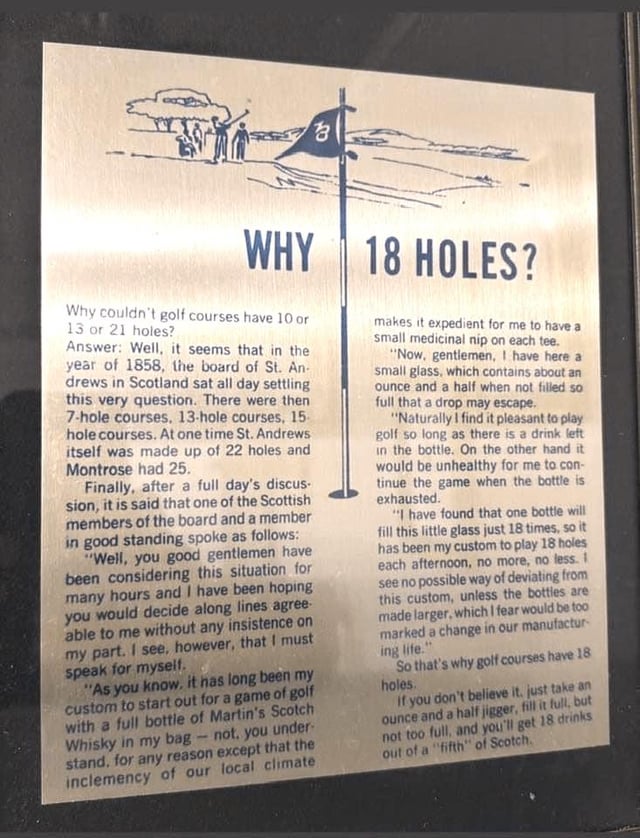So, I was out on the course the other day, just a casual round, and it hit me. Like, why 18 holes? Not 15, not 20. It’s always 18. It’s one of those things you just accept, right? But I got curious, really curious. I’ve been playing for years, and it never really crossed my mind to dig into it. So, I figured, let’s find out. This was my little project for the week, just to satisfy my own brain.
My Journey into the “Why”
First thing I did, I asked a few of the older guys at my club. You know, the ones who’ve been around forever. One fella, old Tom, he just shrugged and said, “Always been that way, son.” Not much help there, but hey, it was a start. Another guy mumbled something about Scotland, which got me thinking.

So, next, I actually went online. Not like I was writing a thesis or anything, just some casual searching. Popped open my laptop, typed in a few things. And bits and pieces started to come together. It wasn’t like someone just woke up one day and said, “Yep, 18 is the magic number!” It was more of an evolution, which kinda makes sense.
Here’s what I pieced together:
- It wasn’t always 18: This was the first big surprise for me. Some early courses had all sorts of numbers. Some had 12, some had 22, whatever fit the land they had.
- St Andrews played a big role: This name kept popping up. Apparently, the Old Course at St Andrews in Scotland originally had 22 holes. They were laid out in a line, 11 out and 11 back.
- Combining holes: Then, around 1764, they decided some of their holes were too short. So, they started combining them. They turned the first four short holes into two longer ones, and did the same for the last four. So, 22 holes became 18 (10 out, with 8 of those played again on the way in, making 18 distinct playing experiences). That’s a big shift!
I found it pretty interesting that it wasn’t some grand design from the get-go. It was practical. They looked at their course, thought “we can make this better,” and did it. Simple as that, really.
How it Stuck
Then I wondered, okay, St Andrews did it, but how did that become THE standard? Well, St Andrews was, and still is, a pretty big deal in golf. Other clubs started looking at what they were doing and thought, “Hey, that sounds like a good idea.”
Later on, the Royal and Ancient Golf Club of St Andrews (the R&A), which became one of the main rule-making bodies for golf, officially endorsed the 18-hole format. So, when new courses were being built, they often followed that model. It just sort of caught on and became the norm over time.
I also stumbled upon a more, let’s say, “folkloric” explanation. You might have heard it. The one about a bottle of Scotch whisky having 18 shots, so a round lasted as long as the bottle. Honestly, from what I could gather, that’s probably just a fun story. The St Andrews historical changes seem much more grounded. But it’s a good tale to tell over a drink after a round, right?
So, that was my little adventure into the history of 18 holes. It wasn’t some divine number dropped from the sky. It was a practical decision made at one influential club that gradually spread and became the standard we all know today. Kinda cool to think about when you’re teeing off on the first hole, knowing there’s a bit of history behind why you’ve got 17 more to go!


















